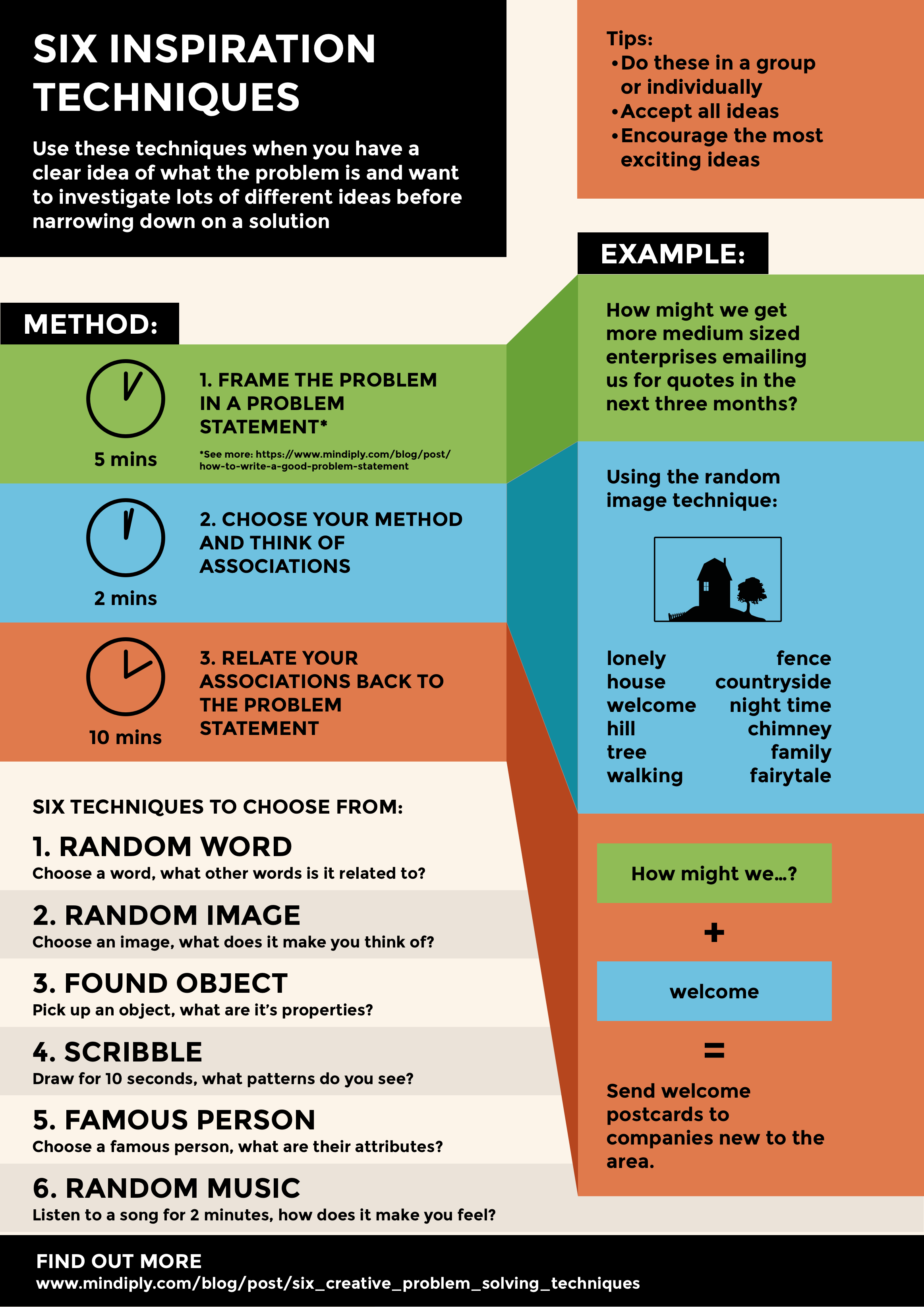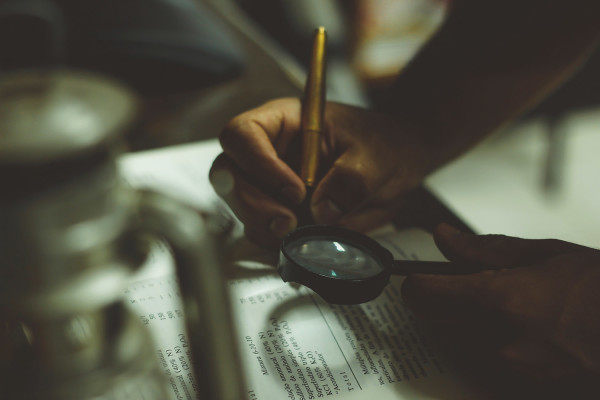Six creative problem solving techniques
Sarah Hutchinson15 Jun 17
Table of contents

Method
For each of these techniques, first think of what problem you are trying to solve. Why are you using a creativity techniques? What’s you goal? Try to frame it in a problem statement - take a look at this article if you’re unsure how to do that.
The example problem statement we’ll use is: ‘How might we get more medium sized enterprises emailing us for quotes in the next three months?’
1. Random word
Choose a random word. You can use a random word generator and pick any word you find interesting. Then try to think of as many words at you can which are related to it. For example, if the word was ‘tree’ you might start listing ‘wood’ ‘green’ ‘nature’ ‘oxygen’. Set a time limit of around 2 minutes.
Once you have a cloud of words, relate it back to your problem statement. Try to look for the relationship between the starting word and the related words. For example ‘oxygen’ is what a ‘tree’ produces. What has the same relationship to your problem statement? What do emails produce, or what could you produce to get more emails? Suspend your judgement in this beginning stage and accept all you ideas.
2. Random image
Choose a random image, for example using a random image generator. Then write down all the associations you have for 2 minutes, then related it back to the problem. What sort of solutions does it make you think of? What could you do to achieve that?
3. Found object
Move around wherever you are and pick up an object. For example, I might pick up the internet router, a plant or a water bottle. Then write down everything that comes into your head for the next two minutes. Include little sketches if it feels good. What are it's properties? How could those properties help solve your problem?
4. Scribble
Take some paper and pen, close your eyes and draw. Let the pen flow and don’t try to draw anything in particular. Draw for about 10-20 seconds and then look at your drawing. What patterns can you see? Does that form suggest anything to you when you think back to the problem? Write down all the ideas you come up with.
5. Random person
Chose a random famous person, you can use a famous person generator. If you’re doing it in a group, pick someone everyone knows something about. Try to really get inside their head, how would they respond to this problem? How can you adopt their attitude? What are their strength and weaknesses?
6. Random music
Get the problem statement clear in your mind, then play a random song using a random song generator. Let it play for around 2 minutes, jotting down any thoughts as they come. Then relate it back to the problem. What mood did the song conjure up? What did it make you think of? Based on that, what could you do to change the situation you’re in?
Huge thanks, respect and acknowledgement goes out to Brian Clegg and Paul Birch and their book Instant Creativity which has 76 creativity techniques, including these 6. It’s definitely worth a read if you’ve found these valuable and what a few more ways to build up your creative problem solving muscle.
Would you like to know the psychology behind these techniques? Read this excellent article by our Chief Scientific Officer, Francesco: Random stimulation and associative thinking.
'Countryside' Icon by Robert Bjurshagen from the Noun Project.







